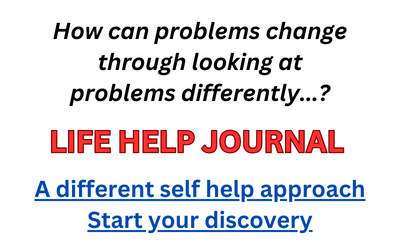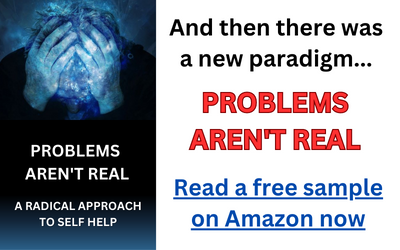I’ve expressed many times that the cause of emotional suffering, including depression, is thought streams. More specifically, the cause of emotional suffering is accepting thought streams as truth.
Many people believe that emotional suffering is caused by external events. In other words something painful happens in the external world, and we suffer as a result. But the interpretation of something as emotionally painful, or not, doesn’t materialize from thin air: it’s the result of thinking.
In fact circumstances aren’t considered painful until we mentally label them as such. This is awful! Then, in response to this labeling, emotions arise: sadness, depression, hopelessness, etc. I’ve expressed often that this mechanism is absolute and without exception. This is always how emotional suffering happens.
But what about the pain body?
The pain body is a term created by spiritualist Eckhart Tolle to define an energy of negative emotion that seems to take over our consciousness for periods of time. The pain body may come on regularly or not; it may seem to appear in response to some external event or may seemingly come “out of nowhere”. Whatever the case, the ultimate effect from the pain body is to put someone into a state of emotional dis-ease.
I believe entirely in the validity of the pain body, mostly because I’ve had the experience of coming into an extended poor mood myself many times. I sometimes analyze these episodes, particularly when no external event seems to trigger them. I say to myself, more or less, where is this coming from? Why is it happening now?
And, most significantly, how can I end this?
The appearance of the pain body really is anguish. But does it violate my belief that all emotional suffering comes from thought streams? Is the pain body the exception, the suffering trigger that comes externally and isn’t caused by internal mental activity?
As I said, I’ve considered my own pain body episodes and when I watch these episodes I notice the thought streams are there. Sometimes I have to watch, and listen, very carefully: thought streams can happen so quickly, and be deeply embedded, and can be easy to miss. Listen and watch carefully, however, and you’ll find the thought streams as well.
Emotions are often much easier to notice than thought streams. Emotions are big and loud and really cannot be missed. Emotions are the red flag, so to speak, that signal to us that something is happening and requires our attention. That something, in this case, is attachment to a thought stream. Emotions follow attachment to (belief in) a thought stream, without exception.
There is no emotion response without a corresponding attachment to (belief in) a thought stream. Emotions do not exist in isolation: they come in behind a thought stream, always. They are a symptom to the condition of attaching to a thought. This is true even in the case of fear. In the face of danger, in lieu of thought attachment, there is action. When there is thought attachment, in the face of danger there is fear.
I’m in trouble!
What is the pain body? It may simply be a wave of negative and painful thinking. Or it may be a phenomenon that somehow adversely affects our thinking patterns, in a manner similar to how a storm can short-circuit electrical currents.
In any case the pain body is, after all, a thought based affliction.
(Get more information about the pain body Here.)

